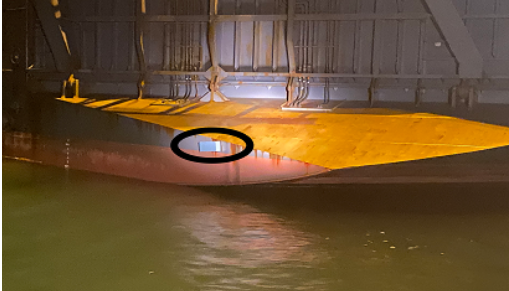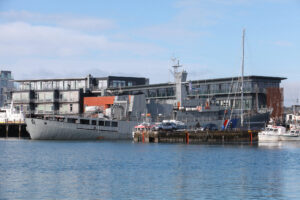
A transnational organised crime cocaine smuggling attempt was busted when customs and the Royal New Zealand navy found 7kg of cocaine attached with a magnet to the side of a ship’s hull.
In April, New Zealand Customs received information that a commercial vessel heading to New Zealand had a box attached at the stern, which was not part of the ship’s structure.
As the vessel approached the country, Customs kept in regular contact with the ship’s captain and agents, working together to monitor the attachment and report suspicious activity.
Alongside New Zealand Customs, the navy and the shipping line agreed on a plan to intercept the vessel approximately 50 nautical miles off New Zealand’s coast using Customs’ patrol vessel Hawk V.
The ship was escorted to a safe location just outside Auckland where Customs coordinated with Navy ordnance experts and divers, who used an uncrewed surface vessel and an aerial drone to monitor and inspect the box.
The box was removed and transferred to a safe location on shore where the teams were able to open it.
The box was found to contain an electromagnet, which held it to the ship, and the box was packed with seven kilograms of cocaine, worth up to NZ$3.15 million in New Zealand.
Customs manager maritime, Robert Smith, said this method of attaching drugs to the hull of a ship is just one of the techniques that Customs and its partners continually look out for.
“The joint operation used a range of technology, including remote controlled equipment, to gather information about the attached box to ensure the safe removal and examination, which led to the cocaine seizure.
“Customs works closely with our Navy partners and this operation was a great example of maximising each other’s capabilities and tools to reach a positive outcome. Our industry partners also play a big role in helping to keep our borders secure. We were helped by the shipping industry right at the start.
“Organised crime groups are always trying to move drugs into – and through – New Zealand, including by this type of method. This operation shows the value of our strong international networks with other agencies as well as global shipping lines to prevent transnational organised crime exploiting not only our population but also our supply chains,” Smith said.
The Royal New Zealand Navy’s maritime component commander, Commodore Garin Golding, said the operation demonstrates an exciting new step in leveraging the advantages of uncrewed systems technology.
“Our control room in Devonport provided a live-tracked, common operating picture to gather intelligence utilising a combination of uncrewed platforms and our professional personnel. It meant the operation was able to be coordinated remotely and achieved the best possible outcome.
“This an excellent example of Customs, Police and the Navy work seamlessly together to combat narcotics smuggling,” Golding noted.


